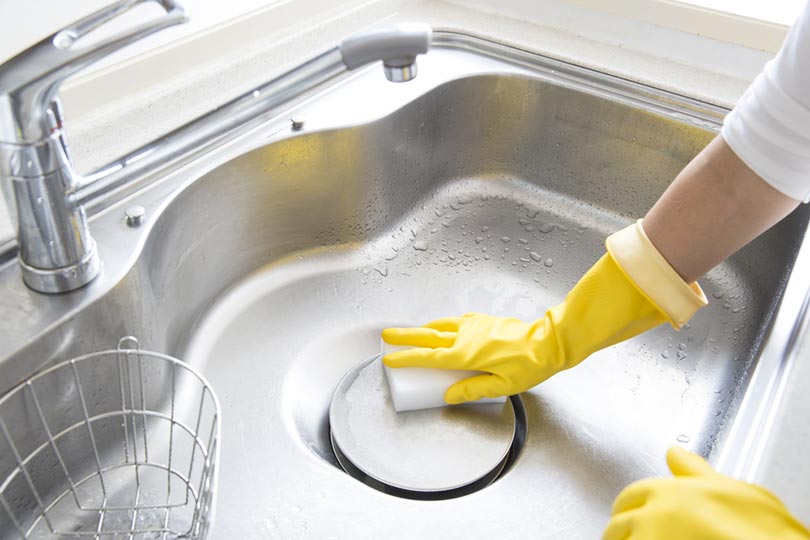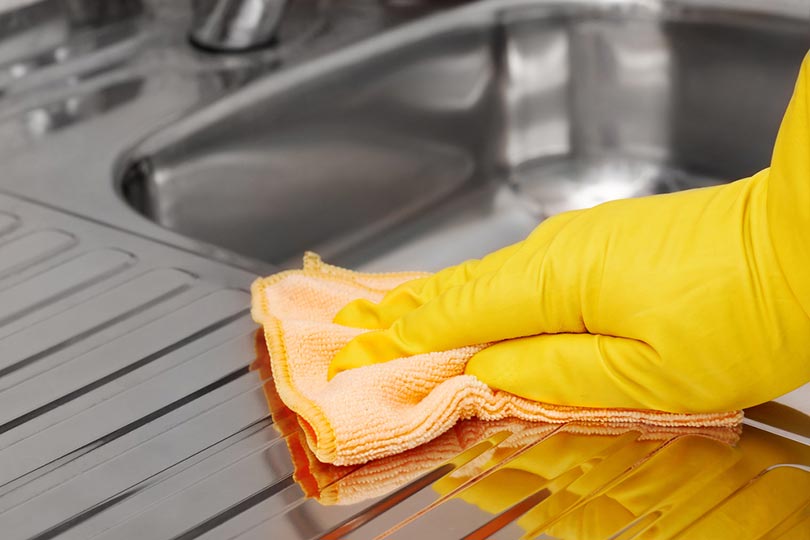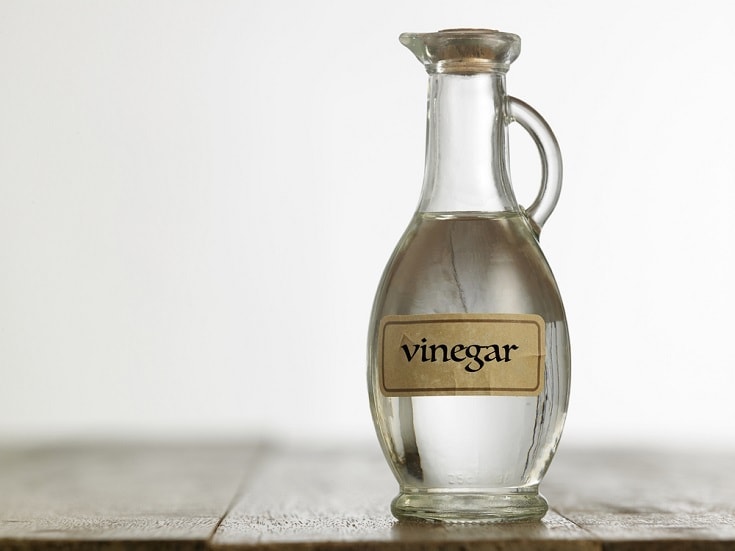Can You Clean Stainless Steel with Windex? Dangers, Tips, & Alternatives
-
Pete Ortiz
- Last updated:

Stainless steel is commonly used in kitchens with many modern appliances made using at least some visible stainless steel. It is used for its clean look but also because it is strong, durable, and sanitary. It’s also heat resistant, which is beneficial for ovens and hobs.
However, as sleek as stainless steel looks when clean, its surface is easily marked with fingerprints and grease stains, and it only takes a few of these blemishes to turn a sanitary and modern-looking fridge door into an untidy mess. If caught straight away, fingerprints and smudges are easy to remove using a damp cloth or applying a little diluted dish soap and cleaning it away. Vinegar is another possible solution.
Windex, an ammonia-based glass cleaning product, can also be used but with some caution. Always spot-test a small area first and ensure that the product is wiped away quickly after use to prevent it from causing rust or other possible damage.
What Is Windex?
Windex is a glass and hard surface cleaner that was introduced in 1933. It is blue and smells of its main cleaning ingredient, ammonia. It is primarily used for cleaning windows and other glass surfaces, but users regularly deploy the product to clean everything from jewelry to stained laundry. It has even found use as a bug killer.
The Dangers of Using Ammonia on Stainless Steel
The main cleaning ingredient in Windex is ammonia. In its pure form, ammonia is very strong and can corrode many materials, including stainless steel. However, when diluted it is less corrosive and can be used to clean and disinfect surfaces and materials.
Because ammonia has the potential to corrode the surface of stainless steel, most appliance manufacturers recommend against using ammonia-based cleaners on their products. Once the surface of a stainless steel appliance is damaged, moisture can get in and rust may eventually form.
Cleaning Stainless Steel With Windex
There are some potential dangers of using Windex to clean stainless steel appliances, but it is generally considered safe to do so, infrequently and with the following care.
- Spot Test – If you are unsure about using any cleaning product on your appliances, start by using it on a very small area. Spot test a section of the appliance that is invisible or barely visible. Rather than testing for effectiveness, you are testing to ensure that the cleaner doesn’t leave any residue or cause damage.
- Dilute – Windex is already diluted, but if you are considering another form of ammonia cleaner, do ensure that it is not too strong an ammonia.
- Mist – Only spray a fine mist of Windex over the stainless steel. Don’t concentrate fire on smudges. This is true when spraying the cleaner on glass surfaces and windows and is especially important on materials that do have the potential to rust.
- Go With the Grain – When wiping the cleaner away, follow the pattern of the grain. Do not wipe in a circular motion and if you feel any kind of resistance when wiping either horizontally or vertically, wipe in the other direction.
- Wipe Away Quickly – It can be tempting to allow cleaners and surfactants to sit on a surface to allow the cleaner to break down dirt and grime. However, you need to wipe Winded away from the metal quickly. Don’t allow it to sit for more than a couple of minutes before wiping every drop off.
- Use Ammonia-Free Windex – As well as the standard Windex product, there is also an ammonia-free version. This means that there is no risk of the ammonia corroding the surface, but you can still get a clean, shiny finish.

Other Stainless Steel Cleaning Methods
Windex can be an effective and efficient stainless steel cleaner, but there are other solutions that one can use to get rid of dirt and grime:
1. Dish Soap
Dish soap is gentle, but it is also very effective at cutting through grease. Apply a small amount of soapy water to a cloth and wipe the surface in the direction of the grain. Once finished, use a clean towel to dry the stainless steel and to get rid of any streaks.
2. White Vinegar
White vinegar frequently crops up in cleaning tips and home solutions. Mix some white vinegar with a little water, apply it to your cloth and wipe the surface. You can use a spray bottle, but do make sure that the bottle does not contain any grease or the two could mix and create chlorine gas. Once you have wiped the surface, use a clean towel to get rid of streaks and buff the surface.

3. Polish
You can use polish to get rid of streaks and fingerprints. Baby oil can be used as a polish for stainless steel, and it will really give a good buff finish to the surface.
Conclusion
Windex is a popular glass and hard surface cleaner that is found in a lot of homes. It finds many uses, from cleaning windows to killing bugs, and, when used with some caution, it can also be used to get rid of fingerprints, smudges, and other marks on stainless steel appliances. If you spray a fine mist, wipe it away quickly, and only wipe in the direction of the grain of the surface, you shouldn’t risk any corrosion or rust on your appliances.
- Cleaning with Vinegar: 9 Eco-Friendly, Inexpensive, Multipurpose Uses
- What Is Ammonia And How Does It Impact Me?
- Detail Cleanings
- Can You Use Windex on Stainless Steel – Yes, with Caution!
- Vinegar Or Windex? How To Clean Stainless Steel Appliances | Think Maids
- How to Clean Stainless Steel
- 10 Things You Didn’t Know Windex Can Do
Featured Image Credit: kazoka, Shutterstock
Contents




